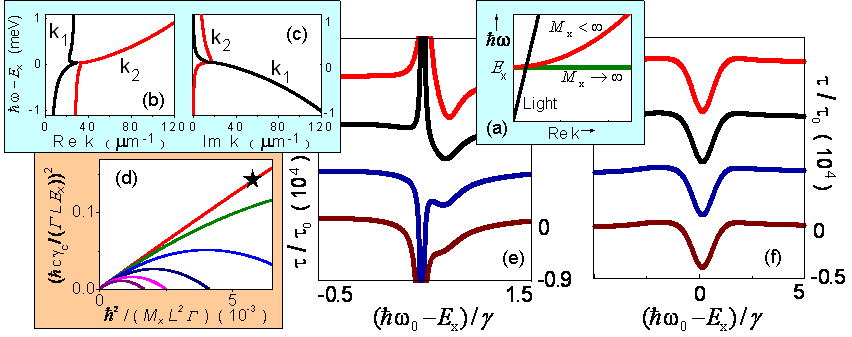Toward a Deeper Understanding of Slow Light and Fast Light Using Absorptive Resonances
A brief summary of “Slow and fast light associated with polariton interference,”
Phys. Rev. Rev. B 82, 035313 (2010)
Over the past decade, interest in controlling the velocity of light pulses has been renewed, in part because of potential applications in telecommunications, spectroscopy and microwave photonics (for recent reviews, see [1,2]). A variety of light-matter coupling schemes, such as electromagnetically-induced transparency, stimulated Brillouin scattering and coherent population oscillations have been devised to produce slow (subluminal) and fast (superluminal) light pulse propagation. Among the existing slow and fast light schemes, the probably simplest concept is based on the text book example of the linear interaction of a light pulse with an absorptive medium consisting of identical, localized dipole oscillators. In the absence of interaction between the two (and the absence of losses), the light and oscillators have independent dispersion relations given by ω(k)=ck and ω(k)=Ex/ħ, respectively (Fig. 1a). Such a description neglects the electronic coupling between the oscillators, which, if taken into account, modifies the oscillator dispersion as schematically shown in Fig. 1a. Such a quadratic dispersion, ħω(k)=Ex + ħ2k2 / 2Mx, can be modeled using the concept of an effective mass, Mx.
While in practice the assumption of Mx→∞, implicitly made in many slow/fast light studies, is certainly justified in many systems, a study of slow and fast light phenomena for arbitrary values of Mx broadens the understanding of the Mx→∞ limit. Furthermore, systems like excitons in GaAs are good candidates for the verification of slow/fast light phenomena with Mx<∞ predicted here.
Fig.1 (a) Sketch of the uncoupled (and unbroadened) light and oscillator dispersions (with real ω and real k); (b, c) Example of the two-branch polaritons dispersion for Mx<∞; (d) The critical dephasing rates γc, at which the slow-to-fast light transition occurs. Exciton coupling strength=Γ, sample length=L. For clarity, only the first 6 lines are shown. The star indicates the transition shown in (e). (f) Transit times of spectrally narrow pulses at four slightly different dephasing rates (τ0 is the transit time in the absence of the resonance, ω0 the center frequency of the spectrally narrow pulse). The curves are shifted vertically for clarity. (e) Same as in (f) but for Mx→∞. (After Ref. [4].)
An example of the well known [3] polariton dispersion (i.e. coupled light-matter modes) in the case of Mx<∞ is shown in Fig. 1 b,c. There are two polariton modes that, in the vicinity of a certain frequency, have comparable loss coefficients (given by the imaginary parts of the wave vector k). In the vicinity of this frequency, light propagation is strongly influenced by the interference of the two polariton modes. We found [4] that, for certain dephasing rates γ, this interference can lead to very long transit times (slow light). Interestingly, changing γ by very small values can lead to the opposite, namely very large negative transit times (fast light). This is shown in Fig. 1e for a spectrally very narrow pulse. In fact, for a given effective mass, we may see several such slow-to-fast transitions when γ is varied over a range of values (Fig. 1d). These transitions do not occur in the usual case of Mx→∞ (Fig. 1f), or, more precisely, they are collapsed to the hypothetical value of exactly zero dephasing (Fig. 1d).
In summary, we have shown that slow and fast light behavior due to linear coupling of light with oscillators depends strongly on the electronic coupling between the oscillators. The non-trivial effects found for Mx<∞ broadens the understanding of the well-studied limiting case of Mx→∞ in which these effects cannot be observed.
We thank Stefan Schumacher for helpful discussion. This work was supported by DARPA, ONR, JSOP, and TRIF.
[1] J.B. Khurgin and R.S. Tucker, Slow Light – Science and Applications (CRC Press, New York, 2008)
[2] R.W. Boyd and D.J. Gauthier, Science 326, 1074 (2009)
[3] T Skettrup, J. Phys. D: Appl. Phys. 14, 1343 (1981)
[4] B. Gu, N.H. Kwong, R. Binder and A.L. Smirl, Phys. Rev. B 82, 035313 (2010)


